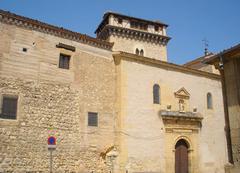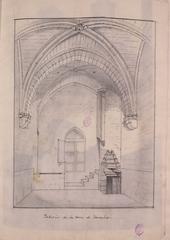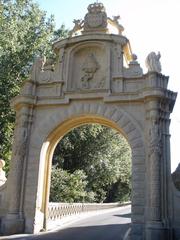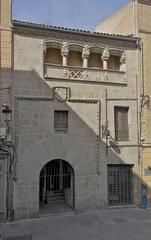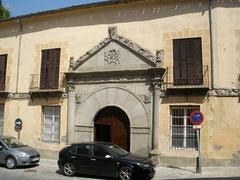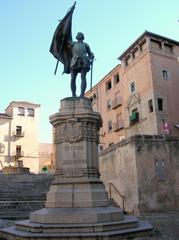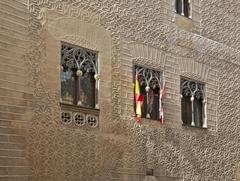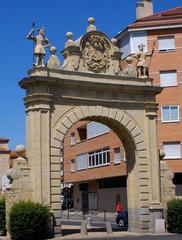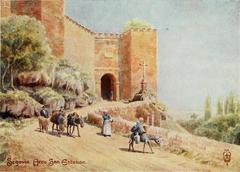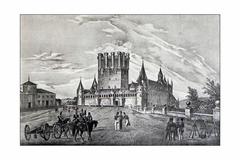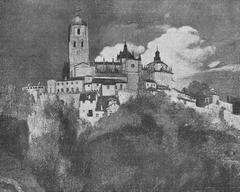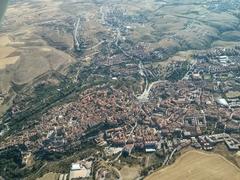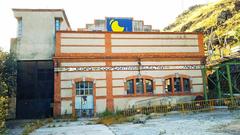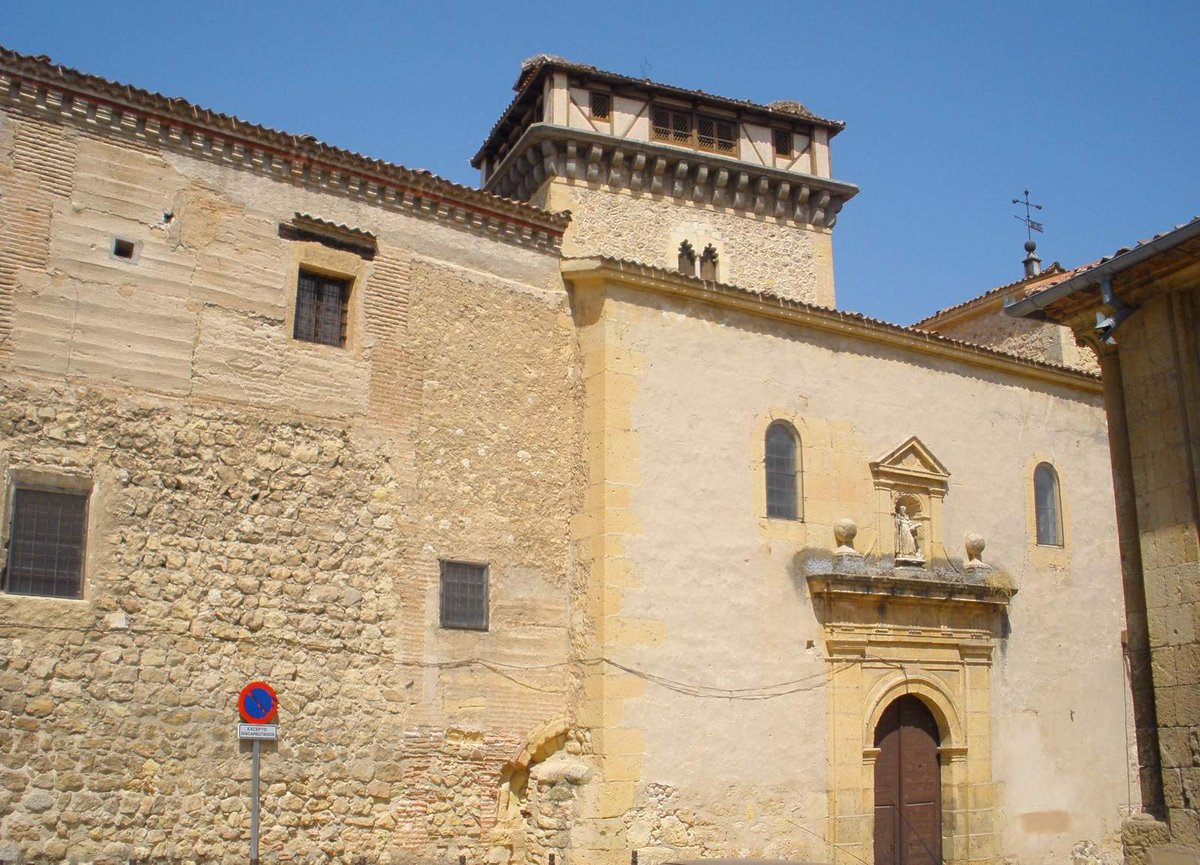
Tower of Hércules Visiting Hours, Tickets, and Historical Sites in Segovia
Date: 14/06/2025
Introduction
The Tower of Hércules in Segovia, though less renowned than its namesake lighthouse in A Coruña, is a unique medieval monument that reflects the city’s layered history and architectural evolution. Situated within the Clausura de las Madres Domínicas Convent, this late Romanesque structure embodies the fusion of Romanesque and early Gothic styles, serving both defensive and religious purposes. Its mythological dedication to Hercules and prominent position in Segovia’s urban landscape make it a compelling destination for history enthusiasts, architecture lovers, and travelers alike (Spain.info; Esmadrid.com).
This guide presents a thorough overview of the Tower of Hércules, including its historical background, architectural features, visitor information (such as hours and ticketing), accessibility, and recommendations for nearby attractions. We also clarify common confusions with the Tower of Hércules in A Coruña and provide additional insights into Segovia’s most iconic Roman monument: the Roman Aqueduct.
Contents
- Romanesque Origins and Medieval Construction
- Architectural Features and Symbolism
- Historical Significance in Segovia
- Mythological and Cultural Associations
- The Tower’s Urban Role
- Visitor Information: Hours, Tickets, and Accessibility
- Nearby Attractions
- FAQ
- Preservation and Heritage Status
- Comparative Context: Segovia’s Towers and Roman Monuments
- Conclusion and Visitor Recommendations
- Sources
Romanesque Origins and Medieval Construction
The Tower of Hércules in Segovia was constructed in the 13th century during a period of urban and religious revitalization following the Reconquista. Unlike the Roman lighthouse in A Coruña, Segovia’s tower was built for both defense and as part of a monastic complex, exemplifying the evolving architectural priorities of medieval Castile (Spain.info). Its square base, robust masonry, and geometric ornamentation are hallmarks of late Romanesque style, while early Gothic influences can be seen in some of its arches and decorative elements.
The tower’s name stems from a statue of Hercules battling a beast, a rare feature that blends classical mythology with Christian symbolism. This integration of myth into the medieval Christian context reflects broader European trends and local traditions (Spain.info).
Architectural Features and Symbolism
Constructed primarily from local granite, the Tower of Hércules showcases the technical skill of medieval builders. Its massive stone blocks, thick walls, and minimal fenestration provided defense and stability. The geometric red figures at its plinth and the statue of Hercules lend the structure both artistic and symbolic significance.
Inside, the tower was designed with multiple levels connected by a narrow spiral staircase, serving as lookout, storage, and refuge. The blend of defensive architecture and religious function is underscored by Christian motifs and medieval coats of arms.
Historical Significance in Segovia
Segovia’s strategic location on the Castilian plateau made it a nexus for royal, ecclesiastical, and military power. The tower’s integration into the Clausura de las Madres Domínicas Convent illustrates the close relationship between spiritual institutions and urban development in medieval Spain (Esmadrid.com). The tower not only protected the convent but also contributed to the city’s defensive network.
Mythological and Cultural Associations
The dedication to Hercules, though not historically linked to the hero’s legend, amplified the tower’s status and connected Segovia to the wider European tradition of appropriating classical myths. The statue of Hercules fighting a beast at the tower’s entrance invokes themes of heroism and divine favor, resonating with both local and broader medieval narratives (Spain.info).
The Tower’s Urban Role
Located at Plaza de la Trinidad, the Tower of Hércules is surrounded by other medieval monuments—such as the Romanesque churches of San Esteban and San Martín, the Segovia Cathedral, and the Alcázar. Its prominent position within the city’s historic core makes it a key component of Segovia’s architectural identity (Esmadrid.com).
Visitor Information: Hours, Tickets, and Accessibility
Visiting Hours:
- Typically open Tuesday to Sunday, 10:00 AM–6:00 PM; closed on Mondays and public holidays. Hours may vary seasonally—check the official Segovia tourism website for updates.
Tickets:
- Admission is included in the combined ticket for the Clausura de las Madres Domínicas Convent, generally €3–5. Discounts are available for students, seniors, and groups. Tickets can be purchased onsite or via official tourism platforms.
Accessibility:
- The medieval design restricts accessibility for wheelchair users; narrow staircases and uneven floors present challenges. The entrance and visitor center are more accessible, but upper levels may not be.
Guided Tours:
- Guided tours, often included with admission, are highly recommended for a fuller understanding of the tower’s history and symbolism.
Nearby Attractions
Enhance your visit to the Tower of Hércules by exploring Segovia’s other historical landmarks:
- Segovia Cathedral: A masterpiece of late Gothic architecture.
- Alcázar of Segovia: Famed for its fairy-tale profile and panoramic views.
- Romanesque Churches: San Esteban and San Martín are notable for their elegant towers and rich history.
- Roman Aqueduct: An iconic feat of ancient engineering, free to visit and central to the city’s identity.
Frequently Asked Questions (FAQ)
Q: What are the Tower of Hércules visiting hours?
A: Usually Tuesday to Sunday, 10:00 AM–6:00 PM. Closed Mondays and public holidays; confirm on the official website.
Q: How much are tickets?
A: €3–5 as part of the convent entry; discounts for eligible visitors.
Q: Is the tower accessible?
A: Ground floor and visitor center are accessible, but upper floors are not due to stairs.
Q: Are guided tours available?
A: Yes, and booking in advance is recommended.
Q: Where is the tower located?
A: Plaza de la Trinidad, in Segovia’s historic center.
Preservation and Heritage Status
The Tower of Hércules is recognized as integral to Segovia’s UNESCO World Heritage designation (1985), reflecting its importance as a cultural and architectural monument. Ongoing preservation balances visitor access with the need to maintain historical integrity (Esmadrid.com).
Comparative Context: Segovia’s Towers and Roman Monuments
While Segovia’s Tower of Hércules is rooted in medieval tradition, the city’s most celebrated Roman monument is the Roman Aqueduct, a UNESCO-listed marvel of ancient engineering. The aqueduct, constructed in the 1st century AD, features 167 arches and is free to visit, serving as a symbol of both Segovia’s Roman origins and enduring civic identity (Adventure in You; UNESCO).
For more on the aqueduct and Segovia’s Roman heritage, see our article: Exploring the Segovia Roman Aqueduct: Visiting Hours, Tickets, and Historical Significance
Conclusion and Visitor Recommendations
The Tower of Hércules in Segovia offers a captivating journey into Spain’s medieval past, blending myth, artistry, and architecture. Its accessible ticketing, central location, and proximity to other major sites make it a rewarding destination for cultural travelers. For the most enriching experience, check current visiting hours, secure tickets in advance, and explore the rich network of nearby attractions. Enhance your visit with guided tours and the Audiala mobile app for in-depth historical insights.
Sources and Further Reading
- Tower of Hércules Segovia, Spain.info, 2024
- Trips to Segovia, Esmadrid.com, 2024
- Nomads Travel Guide
- Tourist Guide Map
- Adventure in You
- The Crazy Tourist
- Wanderlust Photos Blog
- UNESCO
